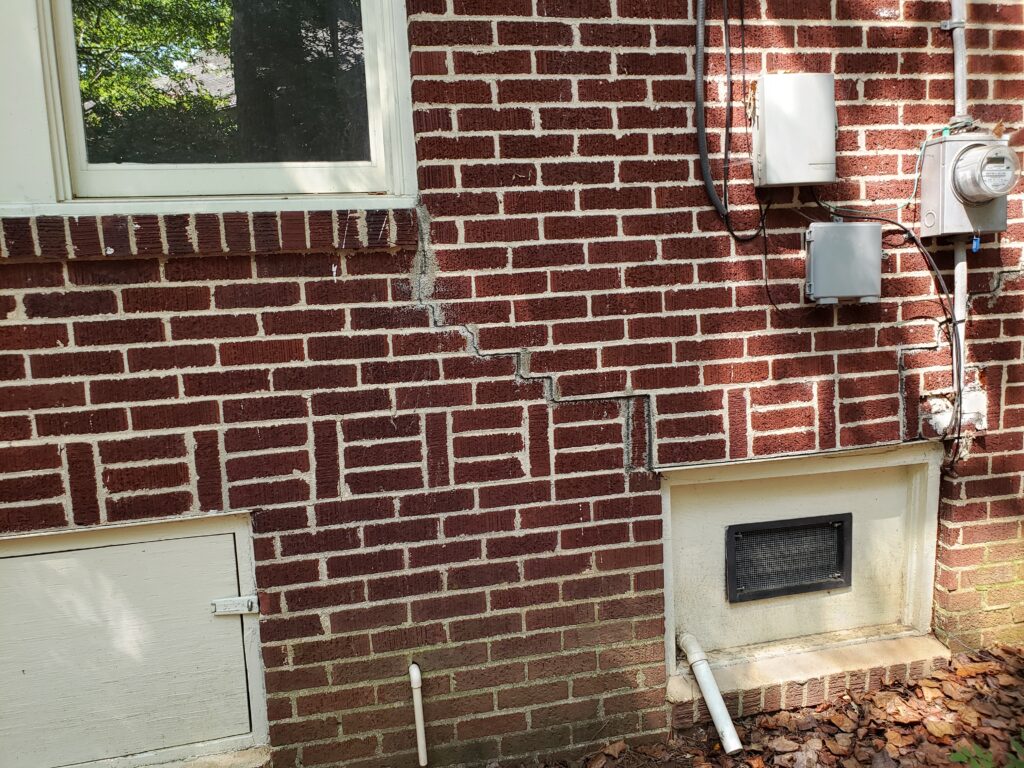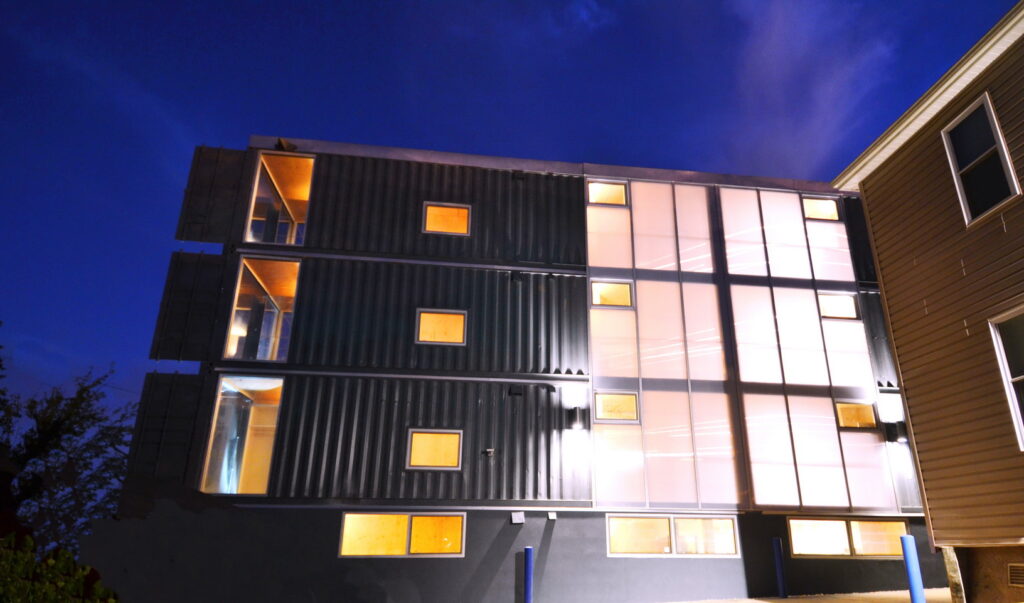Surprisingly, it’s not necessary or advisable to repair every defect in a house. Normally what we will do in that case is give a number of alternatives in our report. We then layout the pluses and minuses of each alternative. Many times it our foundation repair engineering indicates it’s flamingly obvious that repairing the house defect will cause more problems than it fixes. It also can be ridiculously expensive with little benefit.
Let me give the most extreme example of what I have encountered:

Obviously, this is a pretty serious looking crack on this house. Should it be repaired? I recommended against it. Why? The way this would be repaired would be extremely expensive and give almost no benefit.
The Repair
The damage you see is settlement damage in the brick veneer of the house. It isn’t part of a load bearing part of the stucture, the structure itself is supported on beams behind the veneer that span between brick piers. The venneer sets on a foundation of brick set in the ground about a foot below the surface.
To repair this, you need to use helical piers. They are basically screw piers, here is a diagram of how they are installed (source – Chance).

Look at the drawing, the contractor attaches the pier bracket to a concrete foundation. There isn’t any way to attach this bracket to a brick foundation – the brick will break apart between the piers. So…you have to dig under the foundation about a foot and place reinforcing, and pour a concrete beam to attach the piers. The problem is, you can’t do the whole lenght of the foundation at once – it can’t hang in mid air. So, you have to do it in 5 foot sections, by hand. We are now getting very expensive.
The Results
Let’s say we did this on the house above. What happens then? Nothing. The crack is still there. In some cases you can lift up the foundations and close up cracks. The foundation repair contractor won’t be able to lift the foundation here – it will crack the brick. So, you would still have the crack we see above.
What I need to mention too is that there is no evidence of failure inside the house (like diagonal cracking around windows). Also, there was no evidence that the foundation had moved recently. It appeared from the weathering of the mortar that this movement happened a long time ago.
So, what happens if you do nothing in this case? Probably nothing will happen, most of the settlement has probably occurred over the past 70 years. What if the crack opens further? The repair will be the same. The increase in cost will be from inflation. So, there really is no serious downside to doing nothing, except that there is a very slight chance for more movement. Oh, I must mention I visited the house the first time and gave my recommendations, and 5 years later I returned and compared what the crack looked like with photos I took the first time – no movement. More recently I went to the house again, it has now been 10 years since my original site visit. Still no movement.
Of Course This Will Happen
Of course contractors came out and predicted failure of the whole house, but unfortunately that is typical. Unfortunately, I’ve seen contractors warn of some pretty extreme and unrealistic things to try to soak an unsuspecting homeowner. That’s why you need to call us.
So, in summary, not every repair needs to be done. Since we don’t make money on whether you repair your foundation or not, our objective is to give you the best alternative, which is why you should call us first.






